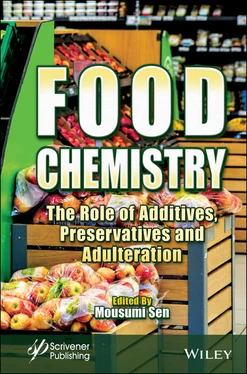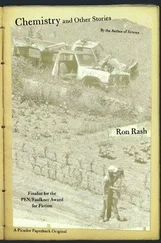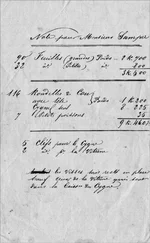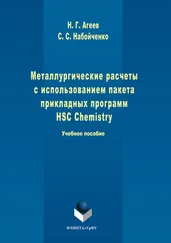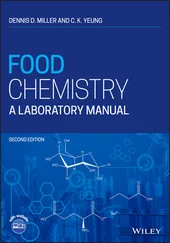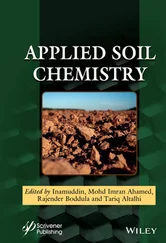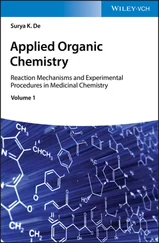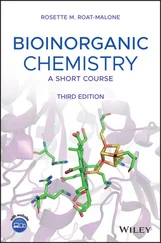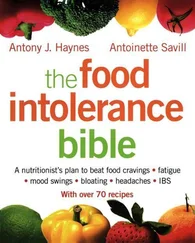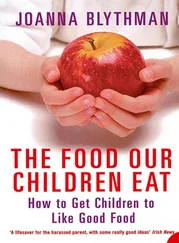Food Chemistry
Здесь есть возможность читать онлайн «Food Chemistry» — ознакомительный отрывок электронной книги совершенно бесплатно, а после прочтения отрывка купить полную версию. В некоторых случаях можно слушать аудио, скачать через торрент в формате fb2 и присутствует краткое содержание. Жанр: unrecognised, на английском языке. Описание произведения, (предисловие) а так же отзывы посетителей доступны на портале библиотеки ЛибКат.
- Название:Food Chemistry
- Автор:
- Жанр:
- Год:неизвестен
- ISBN:нет данных
- Рейтинг книги:5 / 5. Голосов: 1
-
Избранное:Добавить в избранное
- Отзывы:
-
Ваша оценка:
- 100
- 1
- 2
- 3
- 4
- 5
Food Chemistry: краткое содержание, описание и аннотация
Предлагаем к чтению аннотацию, описание, краткое содержание или предисловие (зависит от того, что написал сам автор книги «Food Chemistry»). Если вы не нашли необходимую информацию о книге — напишите в комментариях, мы постараемся отыскать её.
A unique book detailing the impact of food adulteration, food toxicity and packaging on our nutritional balance, as well as presenting and analyzing technological advancements such as the uses of green solvents with sensors for non-destructive quality evaluation of food.
Audience Food Chemistry: The Role of Additives, Preservatives and Adulteration
Food Chemistry — читать онлайн ознакомительный отрывок
Ниже представлен текст книги, разбитый по страницам. Система сохранения места последней прочитанной страницы, позволяет с удобством читать онлайн бесплатно книгу «Food Chemistry», без необходимости каждый раз заново искать на чём Вы остановились. Поставьте закладку, и сможете в любой момент перейти на страницу, на которой закончили чтение.
Интервал:
Закладка:
iii. Anti-browning agent: The development of brown or gray or black color in food product is due to browning reaction that may be of two types.a. Enzymatic browning that makes the formation of quinones by the oxidation of polyphenols in presence of polyphenol oxidase. It can be prevented by blanching, acidification, and addition of sulfites.b. Non-enzymatic browning occurs due to the reaction between reducing sugar and free amino acids resulting melanoidin pigment. It can be prevented by avoiding excessive heat, controlling moisture content, and application of sulfites. Sulfites are used in the form of sodium (or potassium) sulfite, bisulfite, or metabisulfite. Other anti-browning agent includes ascorbic acid, cysteine, and 4-Hexylresorcinol.
2.3.2 Nutritional Additives
Nutritional additives mean addition of pure compounds like vitamin, mineral, amino acid, and fatty acid to maintain or improve the nutritional quality of food. It is also added for other purposes, like vitamin C and E are added as antioxidant, and carotenoids are added to improve color.
Nutritional additives include fortification of salt with iodine, enrichment of cereal and dairy products with vitamin A, B, and D, enrichment of fruit beverages with vitamin C, essential fatty acid, mineral, and fiber [11].
2.3.3 Flavoring Agent
Flavoring agent includes flavorings and flavor enhancers. Flavorings added in the food produce flavor in the food, while flavor enhancer intensifies the existing flavor. Food flavoring may be of three types.
a. Natural flavoring: These are single or mixed substances obtained from vegetable and animal source. This type of flavoring includes spice oleoresin and essential oils from citrus oils.
b. Nature identical flavoring: These are the chemical substances but the identical substances are present in nature.
c. Artificial flavoring: These types of compounds are completely synthetic and they are not identified in natural products.
Natural flavor includes spices, herbs, essence, and essential oil. The synthetic flavor includes esters, aldehydes, ketones, alcohols, and ethers. Monosodium glutamate is an example of widely used flavor enhancer [12, 13].
2.3.4 Coloring Agent
Coloring agents are added into the food to make it attractive and to influence the flavor. The other reasons for the addition of food color are as follows:
a. Color may be lost during processing and storage, so to compensate it, food color is used.
b. Food material containing natural color may show variation of color food color is added to correct that variation.
c. Food color is added to improve the color imparted by the natural color.
d. Food color is used for the food items having no color.
As per FDA regulation, the colors added may be with or without certification. The certified colors are man-made color. They are more effective than the natural color. They do not introduce any off flavor in the food. The natural colors are exempted from certification but they are more expensive and can produce off flavor. Color additives used may be of three types.
a. Pure pigment or straight color.
b. Colors obtained by mixing the straight colors with other substances.
c. Mixtures produced by mixing two or more pure colors.
Natural food color includes annatto, betanin, saffron, lycopene, and anthocyanin. The certified food color includes Erythrosine, Tartrazine, Sunset Yellow, and Brillant Blue [14]. Natural color additives have some health benefits. For example, curcumin has antimicrobial and antioxidant activity. Riboflavin has antioxidant activity.
The natural and synthetic food colors permitted by FSSAI (Food Safety and Standards Authority of India), 2011, are mentioned in Tables 2.2and 2.3.
Table 2.2 List of natural food colors permitted by FSSAI.
| Name of the color | Type | Color |
|---|---|---|
| Carotene and carotenoid | Natural | Orange |
| Chlorophyl | Green | |
| Riboflavin | Yellow-orange | |
| Caramel | Dark brown | |
| Annatto | Orange-red | |
| Saffron | Yellow or orange | |
| Curcumin or turmeric | Yellow |
Table 2.3 List of synthetic food colors permitted by FSSAI.
| Name of the color | Color | Type of the color | ADI (mg/kg of body weight) |
|---|---|---|---|
| Ponceau 4R | Red | Synthetic | 4.0 |
| Carmoisine | Red | 4.0 | |
| Erythrosine | Red | 0.1 | |
| Tartrazine | Yellow | 7.5 | |
| Sunset Yellow FCF | Yellow | 2.5 | |
| Indigo Carmine | Blue | 5.0 | |
| Brilliant Blue FCF | Blue | 12.5 | |
| Fast Green FCF | Green | 25.0 |
As per FSSAI, 2011, the non-permitted synthetic food color includes Rhodamine, Amaranth, Metanil Yellow, Malachite Green, Acid Magenta, Orange G, and Butter Yellow.
2.3.5 Texturizing Agent
The role of texturizing agent as food additive is to modify the overall texture and mouthfeel of food. It includes emulsifier, thickener, stabilizer, and bulking agent.
a. Emulsifier: It allows water and oil to mix together to form an emulsion. Naturally occurring emulsifying agent is lecithin, milk protein, and legume peotein. Emulsifiers are molecules having both hydrophobic and hydrophilic end.
b. Thickener: It increases the viscosity of food without affecting other properties. Starch, albumen are used as thickener.
c. Stabilizer: Its function is to stabilize the foodstuff structure. Gelatin, pectin, and alginate are used as stabilizer to stabilize the emulsion formed. These additives prevent separation of emulsion, suspension, and foam. They are used in frozen dessert to improve mouth feel. Some of the stabilizers are antioxidants, some are emulsifiers, some may be ultraviolet stabilizer, and some may be sequestrants.
d. Bulking agent: It increases the bulk of food without upsetting the nutritional value. Starch is used as bulking agent [15, 16].
Other than these, phosphates are used as the meat binder in sausage and in processed cheese to get smooth consistency.
2.3.6 Miscellaneous Additives
2.3.6.1 Acidity Regulator
Acidity regulators are food additives that are used to change or keep the pH. They can be acid, bases, and buffering agents. Commonly used acidity regulators are citric acid, lactic acid, and acetic acid. They are used as they are organic acids [17].
2.3.6.2 Anti-Caking Agent
Anti-caking agents are anhydrous compounds that are added in dry food in small quantity. The purpose for the addition of this additive is to prevent the particles caking together and keep the product dry, free flowing. Without anti-caking agents, the dry products like cake and biscuit mix and soup powder will be clumped. The anti-caking agent either adsorbs excess moisture or coats particles and makes them water repellent. Some anti-caking agents are water soluble and some are soluble in organic solvent. Different anti-caking agents are starch, magnesium carbonate, and silica. They are added to food products with table salt, flour, coffee, and sugar. Calcium silicate is an anti-caking agent that is added to table salt. It is able to adsorb water and oil both.
2.3.6.3 Antifoaming Agent
They are also known as defoamer. They reduce and hinder the formation of foam in industrial processed liquid. They are classified as oil based, powder based, water based etc. When used, they reduce the effervescence in a preparation. Silicone oil is added in commercial cooking oil to prevent the froth formation in deep frying food.
Читать дальшеИнтервал:
Закладка:
Похожие книги на «Food Chemistry»
Представляем Вашему вниманию похожие книги на «Food Chemistry» списком для выбора. Мы отобрали схожую по названию и смыслу литературу в надежде предоставить читателям больше вариантов отыскать новые, интересные, ещё непрочитанные произведения.
Обсуждение, отзывы о книге «Food Chemistry» и просто собственные мнения читателей. Оставьте ваши комментарии, напишите, что Вы думаете о произведении, его смысле или главных героях. Укажите что конкретно понравилось, а что нет, и почему Вы так считаете.
